
A Buggy With a Difference
By Harold Pace
Photos courtesy Chris Herr and Geoff Hacker
The explosive popularity of the Meyers Manx in the 1960s caused many fiberglass entrepreneurs to produce their own take on the dune buggy concept. Leo Lyons was a long-time car guy who had built one-off cars with Kustom Kings George and Sam Barris, and wrenched on race cars with his bud Dan Gurney. In 1968 he introduced the Fun Hugger, a ‘glass-bodied buggy built on a full-length VW chassis.
“I was at a race in the 1960s,” recalls Lyons, “when they brought out some dune buggies to show them off. A friend of mine asked me why they had to shorten the chassis. It made more sense just to build the body to fit a standard frame.” (Ironically enough, a few years ago Bruce Meyers came out with his own full-length version of his much-copied Manx.) Lyons was soon in the buggy business, building Fun Huggers at Leo Lyons Equipment in San Bernardino, California.
The styling was fresh and distinctive, not a splashed-off copy of a Manx, and featured a sweeping wraparound tail. “I designed it myself,” explains Lyons. “I couldn’t afford to pay someone else.” The body was also more involved than most buggies, molded from a number of panels that were bonded together to form a stiffer and lighter unit than most one-piece molded bodies.
The Fun Hugger was designed to be easier to assemble than buggies that required a shortened floor pan. The $395 “A” Kit was the cheapest version, and included only the basic body. The “B” Kit added an integrated windshield/roll bar assembly and the mounting hardware. The pricier “C” and “D” Kits added side panels and an engine cover. One price advantage to the five-passenger Fun Hugger was the ability to use stock VW seats front and rear, since most buggies required aftermarket bucket seats. VW headlights, taillights and wiper assembly were also used.
Lyons offered numerous options, including a rear roll bar, two roof designs and 14 solid and metalflake colors. Lyons recalls that he sold about 200 Fun Huggers from 1969 to 1970, before their market demand declined. “People just stopped buying them,” Lyons recalls. Noting one possible reason, “I got started late on the fad.”
While the Fun Hugger is no longer in production, it wouldn’t be forgotten. Six years ago Chris Herr was looking for a festive car to play with both on and off-road. He had looked at Manx-style and Berry Mini-T buggies, but when he spotted a flamed Fun Hugger on eBay he fell in love. “I had never seen anything like it,” says Herr. As a man with a family he also appreciated the utility of having a back seat. “It was a true four-seater, and the sprung VW seats were more comfortable than most buggy seats.”
The buggy was very clean, with a nice blue flame job in front. Herr made a few changes, including cutting the top back for more ventilation and fabricating diamond-plate side covers to keep the body sides free of dust and grime. “The sides were originally fiberglass, but they were always dirty so I made new reshaped metal sides that keep it cleaner,” he explains. His family also put the roof rack to use carrying coolers and supplies.
The buggy runs a stock 1600 VW and has been very reliable, so Herr has confined his repair work to repainting the interior and replacing the carpet. The Fun Hugger has had lots of use over the years. Herr’s extended family of siblings and in-laws owns a number of other buggies and modified VWs, and have made numerous day trips as a group. To see a pack of buggies fly by in rural Indiana would have to get some attention!
Herr and Lyons were recently introduced by Geoff Hacker of Forgotten Fiberglass fame, a fascinating web site devoted to older kit cars. Hacker had hunted down Lyons after buying a radical custom Mercury that Lyons had built in the late 1950s with Kustomizers George and Sam Barris. Hacker was pleasantly surprised to find that Lyons had tried his hand in the kit car biz, and an internet search turned up Herr and his Fun Hugger. Thanks to Hacker we were able to come up with some history on one of the pioneers of the buggy era, and a surviving example in excellent condition. If any readers know of other feature-worthy classic ‘glass out there, let us know.


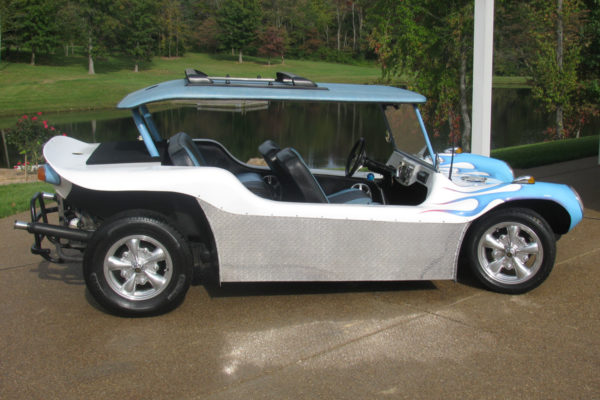



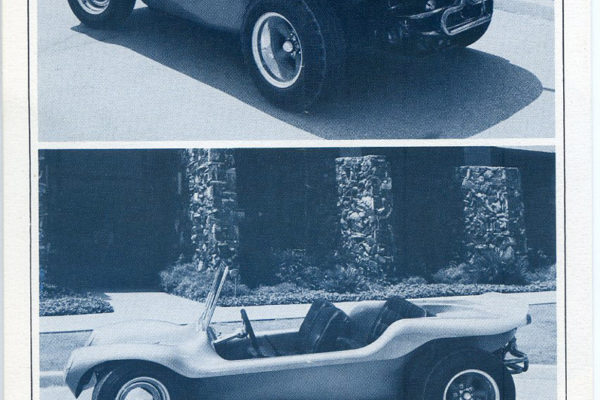

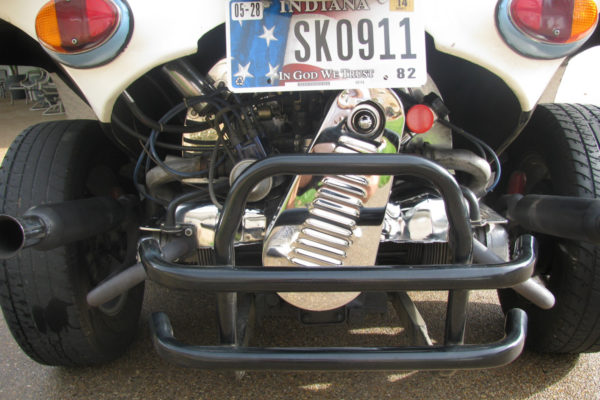


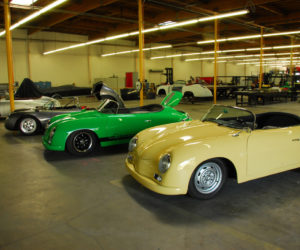
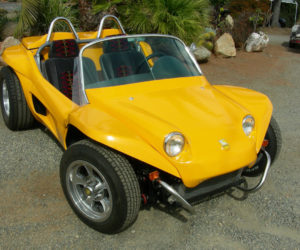






Comments for: Fun Hugger
comments powered by Disqus